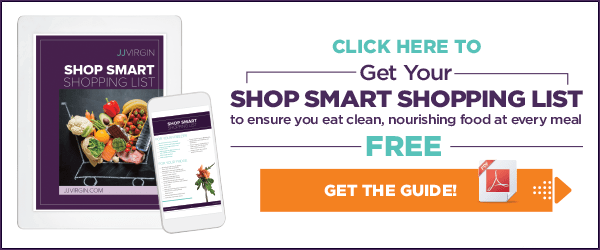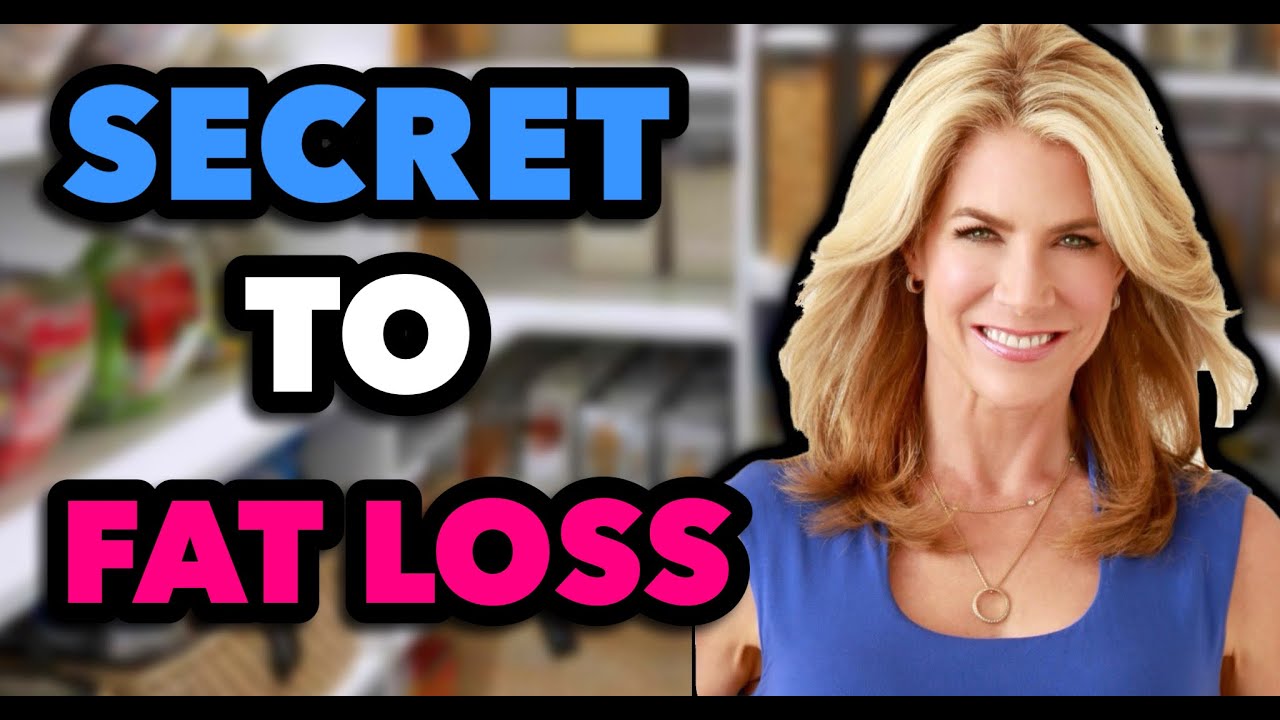Move over sad side salad. Here comes the real deal!
Salad doesn’t have to be a baby-bunny appetizer to keep your mouth busy before the main course, or just a breezy afterthought following a carb-heavy meal.
It can be so much more.
The whole package.
The trifecta of fat, fiber, and protein for healthy blood sugar balance. And contrary to popular belief, salad can be perfectly filling, nutritious, and crave-worthy delicious!
If you want to flip the script, feel better in your skin, and make smarter food choices, you’re not alone. So much of my childhood comfort food relied on empty, carb-heavy ingredients.
Luckily, it’s simple. Eat more salad.
Leafy greens and veggies are highly detoxifying, and are loaded with fiber, minerals, vitamins, iron, antioxidants, and even protein. There are powerful plant compounds found in vegetables that have been linked to so many health benefits.
But sometimes it’s a challenge to get in those recommended 5-10 servings of non-starchy veggies.
Check out my tips below to see how putting together a great salad – and putting your health first – is at your fingertips…
1. Start with plenty of greens.
Why settle for the typical iceberg, Romaine, or baby spinach?
Don’t get me wrong, Romaine and spinach are two of my favorites. (Just be sure to pass on iceberg, since there are far more nutritious options.)
But I never knew how many types of tasty greens existed, until I started growing them.
Stacks of organic heirloom seed catalogues, pages dog-eared and circled – miner’s lettuce, earthy dandelion, lemony french sorrel…
Even if you don’t have a green thumb, or don’t want one, that’s okay!
You can find plenty of organic, pre-washed bags out there, but you’ll be eating fresher, and saving money if you buy whole bunches of greens. (Read this blog if you want some easy tips on how to store greens to maximize freshness.)
Step up your salad game!
Try peppery arugula or watercress, tender and naturally sweet butter lettuce, or baby greens like chard or kale. Microgreens, pea shoots, and bean shoots all add tender texture and protein. Or add a 1/4 cup of fresh chopped parsley for extra iron.
Remember to always buy organic, and if you have access to a local farmers market, head over and meet your local producers. The fresher the better!
2. Add at least two more colors.
Orange carrots, purple beets, and yellow squash are all good veggie choices.
If eating the recommended 5-10 servings is a challenge, shake things up. So, instead of always reaching for the same veggies you get every time, reach for something new. Something colorful!
And remember salad toppings don’t always have to be cold. Try topping your greens with hot roasted veggies or this grass-fed flank steak.
Or make things fruity with red strawberries, green apple, or blueberries.
Just don’t reach for the dried fruit! Raisins and dried cherries have concentrated fructose that can knock your blood sugar out of balance.
3. Pile on the clean protein.
Whether you’re Paleo, vegan, or anywhere in between, getting enough protein each day is essential to your health. So make your salad count.
Cubes of pastured chicken or pork, sliced grassfed steak, or legumes like beans and chickpeas are all great options.
Craving a classic? Try this irresistible Cobb Salad. Or if you’re looking for protein with a crunch, take five minutes to whip up a batch of these Roasted Spiced Chickpeas.
Remember, it’s equally important to source clean protein. The way your food is raised in an undeniable part of your own aging and risk of disease. Be sure to choose organic, pasture-raised poultry, beef, and pork that is never fed any soy, corn, antibiotics or hormones.
4. Bring on the healthy fats!
Avocado and nuts are both good choices.
Loaded with fiber, vitamins, minerals, and even a little protein, avocados are so much more than a great source of omega-3 fatty acids. This healthy fat actually helps your body burn fat, and build muscle.
And don’t underestimate the power of nuts! True nuts like almonds, walnuts, and cashews provide a variety of healthy fats, and studies show that nuts have wide-ranging cardiovascular and metabolic benefits.1
Looking for more tasty healthy fat options? Try coconut or nut-based cheese! You can even make your own with this yummy Homemade Dairy-Free Cashew Cheese recipe.
5. Don’t forget the slow-low carbs.
Add steamed quinoa, cubes of baked sweet potato, or roasted cauliflower.
Add a scoop of this protein-rich, fiber–packed Confetti Quinoa onto your next salad. Your homemade dressing will make the quinoa stick to the lettuce!
Or, if you’re feeling spicy try these Curried Cauliflower Poppers over a bed a greens.
If you’re eating low-carb, you can skip this step at lunch. But if you don’t get some low-sugar, slowly metabolized carbohydrates at dinner, you’ll find yourself wide awake at 3am, thanks to a big shift in your blood sugar and insulin levels.
6. Get crunchy!
Create some crunch with sesame or sunflower seeds.
Adding texture and salty crunch takes the average salad to a whole other level. Let’s see: chopped roasted almonds, toasted pumpkin seeds, or even puffed brown rice or quinoa can all give your salad that extra edge…
One of my favorites is a taco-style salad with plenty of greens, black beans, avocado, diced cabbage, and a few crumbled bean or cassava chips. Or leftover roasted brussels sprouts and crispy bacon over a heap of arugula.
Croutons are NOT invited! Unless of course you make your own out of this flourless protein power bread.
7. Dress it up!
But first, a word of warning. This is where most people go wrong…
Drizzle on sugary sweet raspberry vinaigrette or poppyseed dressing, and you just turned your salad into a sundae.
Not to mention that store-bought dressings tend to be blended with highly inflammatory oils like canola, or soybean.
Instead, opt for homemade. Not only will you save money, you’ll be nourishing yourself.
The best part is, making dressing is super easy. The goal is to amp up the flavor without adding sugar. On baby greens, just a pinch of sea salt and fresh lemon juice hits the mark.
The beauty is, once you start making your own, you can customize your recipe for any occasion. Try this zingy, flavorful Sesame-Ginger Vinaigrette.
Homemade salad dressings also make fabulous marinades for chicken, pork, or beef – even cauliflower and broccoli.
Or get more healthy fats with extra virgin olive oil and added flavor from a splash of apple cider vinegar. Toss in chopped fresh herbs, sea salt, and black pepper or a dash of smoked paprika or garlic powder. Living large!
Now that you’ve got great salad on your mind… add some ideas to your grocery list!
Branch out. Go for the greens you don’t ordinarily buy. You may not like everything you try, but you just may discover new veggies to love, or a salad mix all your own.
Set yourself up for success.
I eat so much more salad when I prep the greens ahead of time, and I even shred and chop various toppings, then store them separately in glass containers in the fridge. Or maybe you like to wing it, and make gorgeous, nutritious salads on the fly! See what works best for you.
If getting more veggies onto your plate is a challenge, you’re not alone. But the answer is simple. Buy ‘em, and try ‘em. You and your loved ones are worth it!
Looking for more delicious, nutritious recipes? Check out our website, or pick up a copy of one of our cookbooks!

Thanks so much for reading this post! If you’re interested in finding out more about how to dial in your diet and health, please check out our 60-second quiz to find the perfect next step for your personal goals and health needs.

Article Sources






